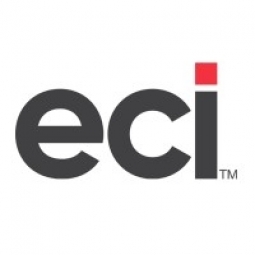Download PDF
from Quote to Invoice: How Rehtek Leverages E2 to Maximize Efficiency and Quality
Technology Category
- Functional Applications - Enterprise Resource Planning Systems (ERP)
Applicable Industries
- Aerospace
- Healthcare & Hospitals
- National Security & Defense
Applicable Functions
- Discrete Manufacturing
- Quality Assurance
Use Cases
- Inventory Management
- Supply Chain Visibility
Services
- System Integration
The Challenge
Rehtek Machine Company, a producer of micro-components for various industries, was facing a challenge in meeting the strict documentation requirements for ISO certification. The company had been maintaining all its records on Excel spreadsheets, which was not efficient or effective for the purpose. The lack of a proper system for documentation was hindering the company's progress towards ISO certification, which was important for both their customers and their own quality assurance processes.
About The Customer
Rehtek Machine Company is a New Jersey-based company that specializes in the production of micro-components. The company was founded in 1990 by Stephen and Paul Reh and has since grown to a team of 15 skilled workers. Rehtek produces micro-components for a variety of industries including medical, electronic, aerospace, and military. The parts they produce range in size from .01 inches in diameter to 1.5 inches, leaving little margin for mistakes. Quality, accuracy, and efficiency are critical priorities for the company.
The Solution
To overcome their challenge, Rehtek adopted the E2 software. Initially, they were drawn to the software due to its ability to quickly and seamlessly create the documentation needed to meet ISO requirements. This allowed them to move forward with the certification process with confidence. However, they soon discovered that E2 was much more than just an ISO documentation tool. They began using E2 in virtually every step of their process, from quoting to invoicing. The software is used to quote jobs, track materials, schedule work, manage shipping, and control quality. E2 also integrates seamlessly with Quickbooks, which Rehtek uses for their accounting work.
Operational Impact
Related Case Studies.

Case Study
Airbus Soars with Wearable Technology
Building an Airbus aircraft involves complex manufacturing processes consisting of thousands of moving parts. Speed and accuracy are critical to business and competitive advantage. Improvements in both would have high impact on Airbus’ bottom line. Airbus wanted to help operators reduce the complexity of assembling cabin seats and decrease the time required to complete this task.

Case Study
Aircraft Predictive Maintenance and Workflow Optimization
First, aircraft manufacturer have trouble monitoring the health of aircraft systems with health prognostics and deliver predictive maintenance insights. Second, aircraft manufacturer wants a solution that can provide an in-context advisory and align job assignments to match technician experience and expertise.

Case Study
Hospital Inventory Management
The hospital supply chain team is responsible for ensuring that the right medical supplies are readily available to clinicians when and where needed, and to do so in the most efficient manner possible. However, many of the systems and processes in use at the cancer center for supply chain management were not best suited to support these goals. Barcoding technology, a commonly used method for inventory management of medical supplies, is labor intensive, time consuming, does not provide real-time visibility into inventory levels and can be prone to error. Consequently, the lack of accurate and real-time visibility into inventory levels across multiple supply rooms in multiple hospital facilities creates additional inefficiency in the system causing over-ordering, hoarding, and wasted supplies. Other sources of waste and cost were also identified as candidates for improvement. Existing systems and processes did not provide adequate security for high-cost inventory within the hospital, which was another driver of cost. A lack of visibility into expiration dates for supplies resulted in supplies being wasted due to past expiry dates. Storage of supplies was also a key consideration given the location of the cancer center’s facilities in a dense urban setting, where space is always at a premium. In order to address the challenges outlined above, the hospital sought a solution that would provide real-time inventory information with high levels of accuracy, reduce the level of manual effort required and enable data driven decision making to ensure that the right supplies were readily available to clinicians in the right location at the right time.

Case Study
Aerospace & Defense Case Study Airbus
For the development of its new wide-body aircraft, Airbus needed to ensure quality and consistency across all internal and external stakeholders. Airbus had many challenges including a very aggressive development schedule and the need to ramp up production quickly to satisfy their delivery commitments. The lack of communication extended design time and introduced errors that drove up costs.

Case Study
Gas Pipeline Monitoring System for Hospitals
This system integrator focuses on providing centralized gas pipeline monitoring systems for hospitals. The service they provide makes it possible for hospitals to reduce both maintenance and labor costs. Since hospitals may not have an existing network suitable for this type of system, GPRS communication provides an easy and ready-to-use solution for remote, distributed monitoring systems System Requirements - GPRS communication - Seamless connection with SCADA software - Simple, front-end control capability - Expandable I/O channels - Combine AI, DI, and DO channels






